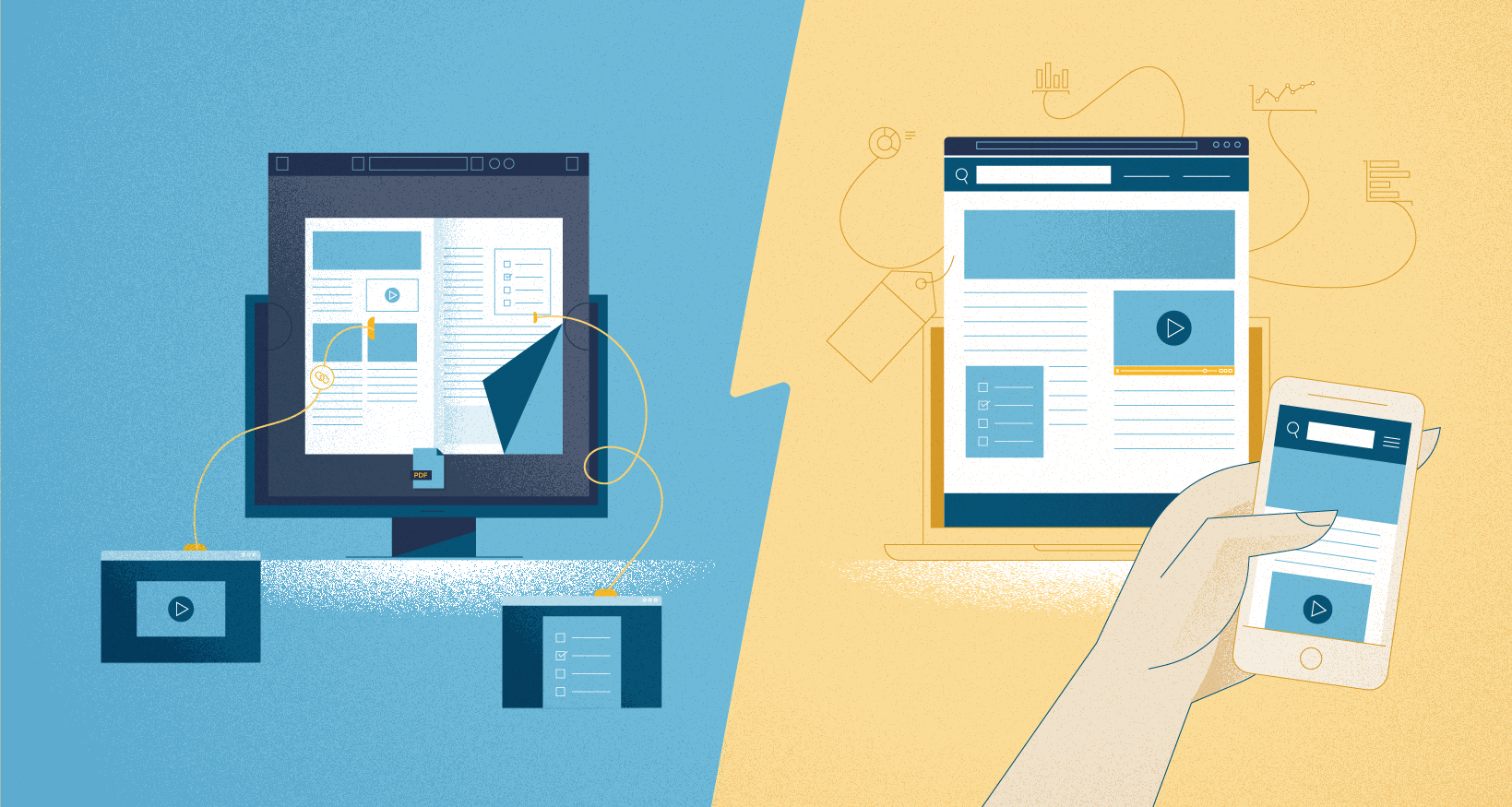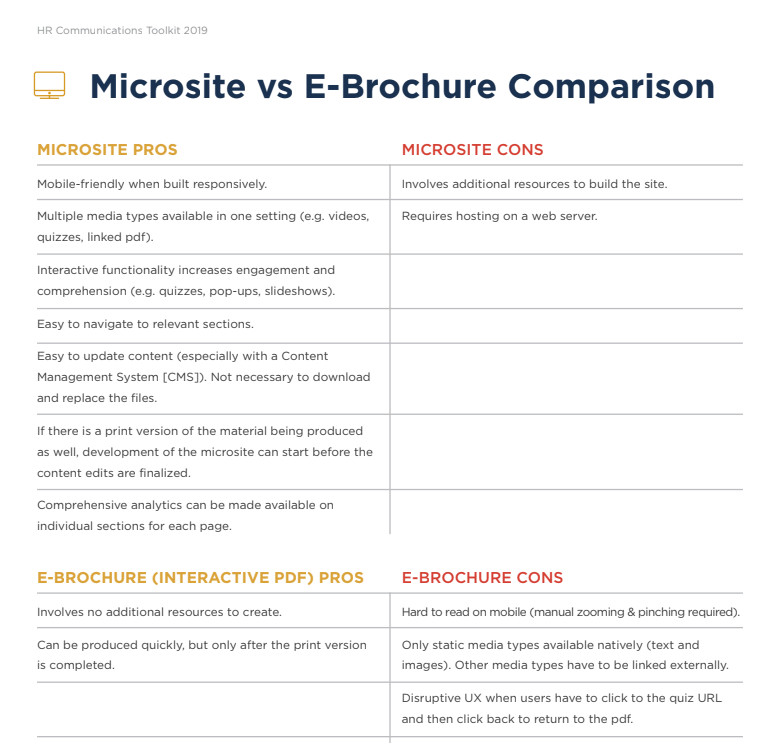
As versatile benefits or campaign communications tools, microsites offer plenty of advantages over one of their predecessors, e-brochures. But in return, they require considerably more resources to create and maintain.
Microsites are useful communication vehicles for targeting specific messages to a niche audience. We’ve created them for:
- HR benefits portals
- Retirement and financial wellness education
- Product landing pages
- Corporate initiatives
- Digital annual reports
With all the versatility of a website, it’s easy to see why they’ve usurped one of its predecessors, e-brochures, as a tool of choice for communications campaigns. But for all its advantages over interactive pdfs, microsites require considerably more resources to create and maintain.
The Many Advantages of Benefits Micrsoites
1. Mobile-Friendly
When built properly, using responsive techniques, microsites adapt their display to suit any device. So no matter where readers are accessing your site, the content is optimized for that context. Whereas e-brochures require manual zooming and pinching to be read on mobile devices.
2. Multiple Media & Interactivity Types
Since elements like videos, audio clips, quizzes, slideshows, and animated graphics can be embedded into a microsite, your audience can enjoy a seamless experience. This means your site becomes a useful resource where they can conveniently access and interact with your content in one place instead of having to click or tap out to an external tab or screen on an e-brochure.
3. Better Content Navigation
Through well-designed menus and keyword searches, microsites give users quicker access to the content they need. This means less time frustratingly hunting through tables of contents or pages of text, especially on mobile. Plus the limited search functionality available in pdf files means your audience is less likely to see or use all that hard work you put into the e-brochure.
4. Easily Update Content
Even if you don’t build your microsite with a content management system (CMS), updating web content is much easier than making changes to an e-brochure. When dates or data change, or you find a pesky typo, making an update to HTML text takes seconds. Whereas any adjustments for an e-brochure require re-uploading the entire document each time a change is made. This flexibility also comes in handy in the planning stage, as you can start building the microsite before your content edits are concluded, as opposed to e-guides which can only be produced once the document is finalized.
5. Understand User Behavior Through Analytics
Sophisticated tracking cookies can give you a more comprehensive look at how your audience is viewing your microsite content; even down to how they’re using individual sections. By contrast, e-brochures allow for minimal analytics that only track how many people accessed the document, but not which specific sections were most useful.
The One Downside of Microsites
With all that in mind, it’s important to be prepared to invest more time, expense, and effort in launching and maintaining a microsite site than an e-brochure.
Depending on the complexity of the site you need, the building of a microsite is typically outsourced to a specialty agency. Even a simple one-page site without complicated functionality still involves obtaining web server space that can handle the traffic as well as ongoing site security monitoring. So while work can begin before the content is finalized, there’s still a multi-week production timeline to be considered before a live site is launched. E-brochures, on the other hand, require no additional resources to create a pdf once the print version is complete.
Download the Checklist
For a quick reference tool, download our Microsite vs E-Brochure Pros and Cons comparison chart the next time you’re trying to decide which is right for your communications campaign.






